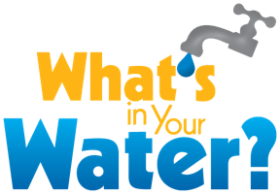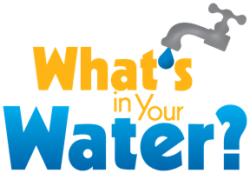
Can students improve water quality for our planet?
Water is essential for life. All living things depend upon it. Yet every day, our actions contribute to pollution that is detrimental to our waterways—and ultimately our watersheds. In this project, students will take action to protect our watersheds. They will investigate water samples to determine what’s in their water, and investigate ways to improve water quality. Then, they’ll share what they’ve learned by creating a fundraiser to raise money for a charity that focuses on improving water quality and water pollution issues.
Imagine if the actions we take now to protect our watersheds resulted in cleaner and more sustainable waterways. What a difference this would make for all of Earth’s living creatures!
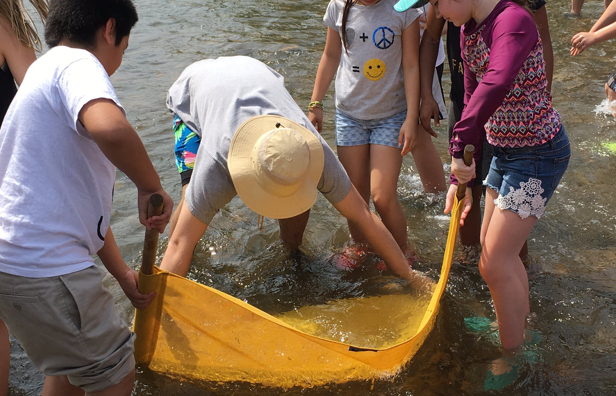
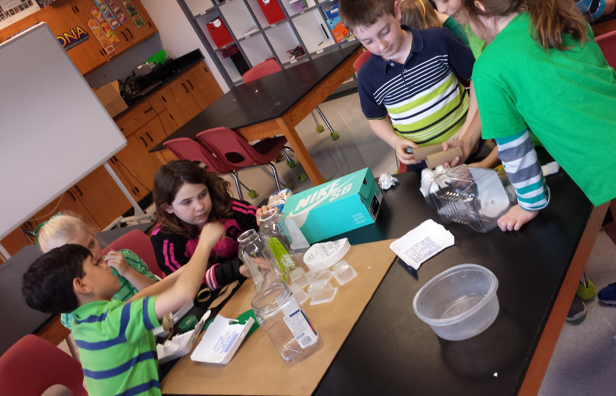
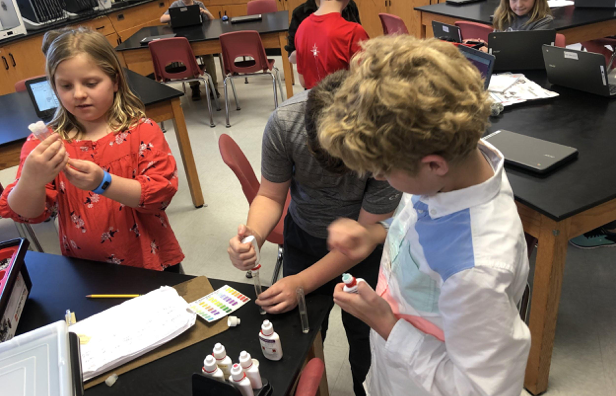
What’s included in your project?
Cross-Curricular Content
Every Blue Apple project provides suggested content correlations to Common Core State Standards, Next Generation Science Standards, and C3 Framework for Social Studies. A featured mini-lesson from each content area is highlighted below along with additional lesson ideas. Not teaching these standards? No problem! Check out the What’s in your Water? K-8 content correlation document for additional lesson ideas.
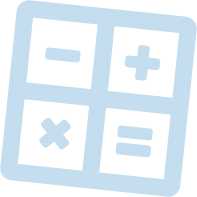
Math
Units of Measure
Lesson 5: After viewing the stories of two girls who need to walk different distances to get water, help students understand the distances traveled by converting between metric units. CCSS.MATH.CONTENT.4.MD.A.1Fractions and Decimals
Lesson 5: Use the story of Cheru and Kamama’s walk to explore fractions and decimals. Have students record the length of Cheru and Kamama’s walks as fractions of a kilometer. CCSS.MATH.CONTENT.4.NF.C.6Place Value
Lesson 8: Make the concept of place value concrete by converting your fundraiser totals into paper currency. Use tens, ones, dimes, and pennies (and hundreds, if necessary) as a model for writing your fundraiser total in expanded form. Come up with a hypothetical fundraiser result with more dollars, dimes, and pennies than you, but fewer hundreds or tens, and have students compare the totals. CCSS.MATH.CONTENT.4.NBT.A.2Rounding
Lesson 8: Use your fundraiser as an opportunity to practice rounding. Have your students describe your approximate total by rounding to the nearest hundred, ten, or dollar. CCSS.MATH.CONTENT.4.NBT.A.3

English Language Arts
Visual and Oral Information
Lesson 5: Explore two videos that function in support of the text in Water Within Reach. Examine the ways in which they add to the text and ways in which the text refers back to the videos. CCSS.ELA-LITERACY.RI.4.7Research
Lesson 2: As they reflect on their learning, students are asked what additional wonderings they have. Help them satisfy their curiosity by conducting independent research into a water-related wondering! CCSS.ELA-LITERACY.W.4.7Integrating Information from Different Sources
Lesson 5: As you read about two girls’ very different water gathering experiences, consider how the two different stories work together to deepen the reader’s understanding of the issue. CCSS.ELA-LITERACY.RI.4.9Organize Opinion Pieces
Lesson 6: Before students vote on different fundraiser plans, have students write a three-sentence supporting paragraph to persuade people to support their plan. Have them state their opinion in their first sentence, then write two sentences giving their best supporting reasons. CCSS.ELA-LITERACY.W.4.1.A
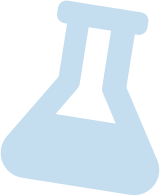
Science
Water and Erosion
Lesson 4: As your students sample their water, explain that water not only affects plants, animals, and people — it can shape the very land itself. NGSS 4-ESS2-1Earth Changes over Time
Lesson 2: As students learn about groundwater, use the opportunity to investigate how the earth is made of different rock layers. Some are water permeable while others are not, and the different layers can give us clues as to how the earth has changed over time. NGSS 4-ESS1-1Maps and Patterns
Lesson 2: Project a Map of the Continental Divide and compare it to the Colorful Watershed Maps by Robert Szucs. Have students attempt to identify which watershed regions flow to the Pacific and which to the Atlantic on the maps. NGSS 4-ESS2-2Waves and Movement
Lesson 5: While conducting research, some students will investigate Garbage Islands in the ocean; as they do, explore how waves cause plastic in Garbage Islands to move up and down and use your discussion to explore the concepts of amplitude and wavelength. NGSS 4-PS4-1

Social Studies
Freedoms and Responsibilities
Lesson 1: After playing the “Water” You Gonna Do about It? game, examine how the issue of water pollution can help us reflect on the best ways to not only protect our freedoms, but also recognize our responsibilities to one another. D2.CIV.4.3-5Benefits and Costs of Individual Decisions
Lesson 4: Before visiting your local body of water, discuss the sources of some possible contaminants students may discover. Explain that items we purchase and use can make our lives more enjoyable or convenient. However, sometimes there are environmental tradeoffs. Discuss as a class how to evaluate when the benefits of an item outweigh its costs. D2.ECO.1.3-5Constructing Maps
Lesson 5: Have students construct a map of their local body of water, including locations of different plant life, as well as features of the local human community. D2.GEO.1.3-5Levels and Branches of Government
Lesson 5: As you decide how to impact your chosen water-related issue, consider writing a letter to an elected official. Reflect on the roles of the branches and levels of government as you consider which official to petition. D2.CIV.1.3-5

Social Emotional Learning
- Self-Management and Relationship Skills
Lesson 3: As students construct their watersheds, they will have to use a number of materials, some of which will make a mess. Use this opportunity to use agreed-upon norms to teach self-management and relationship skills.
Not teaching these standards?
No problem! Check out the What’s in Your Water? content correlation document for additional lesson ideas.
Each Blue Apple Project Includes:

- Engaging lessons designed to make learning memorable, meaningful, and fun
- Curated online resources to save you time searching for content
- In-person, virtual, and hybrid options for all learning environments
- Cross-curricular mini-lessons in English-Language Arts, Math, Science, Social Studies, and Social-Emotional Learning
- Videos and contact info provided by real-world experts willing to meet with your students
- Opportunities to collaborate with other classrooms doing the same project
- Free project supplies to get you started right away

